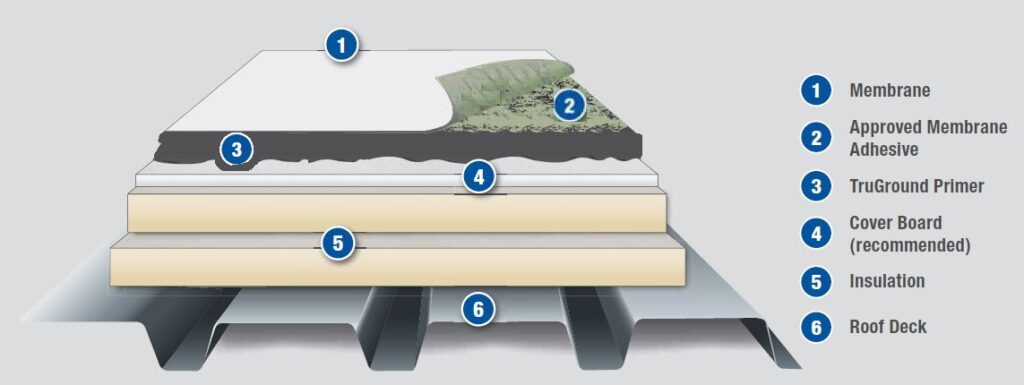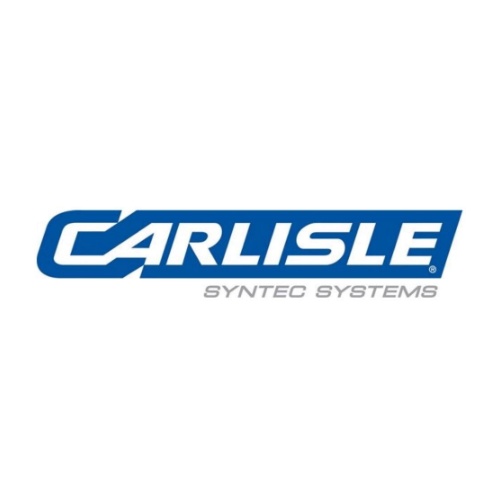Verifying the watertightness of roofing is important, especially if it is to be covered with pavers, ballast, or a vegetated roof assembly. This verification is a field quality-control measure beyond the scope of visual inspections for issuance of a warranty. A common practice is flood testing the roof using ASTM D5957 as a standard guide. However, the flood test method can introduce large amounts of water to a new roof assembly if there is a serious leak. Electronic leak detection (ELD) uses a small amount of water, or no water at all, depending on the method used, so the introduction of large amounts of water is not an issue. The advantages of ELD over traditional flood testing are its capability of providing leak detection throughout the life of the roofing, precisely locating leaks, and with some testing methods, the ability to test sloped roofs and vertical walls. This makes ELD a quality assurance test at time of installation as well as an evaluation or forensic tool for investigating leaks or breaches in the roof membrane throughout its service life (when the membrane is exposed).
Electronic Leak Detection (ELD) – A non-destructive test that uses a brush, broom, roller, platform, or probes, along with low- or high-voltage current, to find breaches, holes, and seam voids in the roof membrane or flashings by completing a circuit with the electrical charge. A breach-free membrane will block any water and therefore, any electrical current. If a leak is present, the water will make its way through the membrane and must touch an electrically grounded conductive substrate directly below the membrane. This allows an electrical circuit to be completed and the testing equipment and technician can accurately pinpoint the membrane breach, limiting the repairs needed to the areas where damage has been identified instead of replacing or repairing the entire roof.

Typical Roof Assembly with Conductive Primer
Electronic leak-testing methods are outlined in ASTM Guide D7877-14 “Standard Guide for Electronic Methods for Detecting and Locating Leaks in Waterproofing Membranes,” which lists the four different ELD test methods. Those four test methods are: Low-Voltage Scanning Platform, Low-Voltage Vertical Roller, Low-Voltage Electronic Field Vector Mapping, and High-Voltage Spark or Holiday Testing. All four of the ELD test methods have the same basic requirements: A conductive substrate must be present directly below the membrane. A valid ground connection must be provided. The membrane must be exposed. And the roof system must have a continuous, unbroken electrical path from the top of the membrane to the conductive substrate below.
- Low-Voltage Scanning Platform Testing is a specific system which uses a small scanning platform, called IntegriScan™, a proprietary system by Detec Systems. This system is described in ASTM D7877 as well as in ASTM D8231 “Standard Practice for the Use of a Low Voltage Electronic Scanning System for Detecting and Locating Breaches in Roofing and Waterproofing Membranes”. The platform is approximately 18 by 24 inches (457 by 609 mm) and incorporates a perimeter wire loop of chains that hang from the platform and make contact with water on the roof’s surface, and a separate line of chains located in the center of the platform. Both series of chains are connected to a low-voltage power source. The platform is moved along the surface of the roof membrane to detect breaches in the roof membrane. When utilized with a conductive primer directly below the membrane, this system works with electrically conductive roof materials such as black EPDM, which contains carbon black, or with roof membranes that have aluminized protective coatings, commonly used on modified bituminous membranes.
- Low-Voltage Vertical Roller Testing is a specific system which uses a Vertical Scanning Unit (VSU Roller) as part of IntegriScan, a proprietary system by Detec Systems. This system is described in ASTM D7877 as well as in ASTM D8231 “Standard Practice for the Use of a Low-Voltage Electronic Scanning System for Detecting and Locating Breaches in Roofing and Waterproofing Membranes”. The VSU Roller utilizes a 3/8” nap by 9” roller. The VSU Roller is moved along the vertical surface of the roof membrane or flashings to detect breaches in the roof membrane or flashings.
- Low-Voltage Electronic Field Vector Mapping (EFVM) Testing works by grounding a conductive roof deck, such as steel, beneath a nonconductive roof membrane and locating places where the electric field goes through the roof. This process is accomplished by dampening the roof and placing an uninsulated wire loop around the perimeter of the area to be tested and around any grounded objects to isolate the testing area. The wire loop is connected to a low-voltage pulsating generator that emits a one-second 40-V charge every three seconds, creating a momentary electric field between the wire loop and the grounded roof deck. The roof membrane acts as an insulator between the electrified wire loop and the roof deck. Electrical charges over the moist membrane surface will be random unless there is a discontinuity or “leak” in the membrane. If there is a leak, a directional current is created that can be followed to the leak using a potentiometer that is connected to two probes that make contact with the roof surface. For conventional and nonconductive roof decks, such as wood, a conductive medium must be built into the roof assembly. Common mediums include welded stainless steel mesh for adhered roof systems, a conductive primer for adhered systems, aluminum screen for loosely laid roof systems, and a conductive fabric for use with loosely laid and mechanically fastened roof systems. This testing method will not work with an electrically conductive roof material such as black EPDM, which contains carbon black, or with roof membranes that have aluminized protective coatings, commonly used on modified bituminous membranes. Continuous water contact must be maintained with the perimeter wire, the testing probes, and through the breach in the roof membrane to the conductive material (metal roof deck or conductive medium), or the breach will not be detected.
- High-Voltage Spark or Holiday Testing uses 1,000 to 30,000 volts of DC power and does not require a wet membrane or perimeter wire loop. The system uses an electrically charged metal “broom” connected to the power source, which is grounded to a conductive roof deck or a conductive medium. When the metal broom passes over a discontinuity in the dry roof membrane, the electrical circuit is completed, and an audible sound and a visible spark is generated by the testing equipment. This testing method will not work with an electrically conductive roof material such as black EPDM, which contains carbon black, or with roof membranes that have aluminized protective coatings, commonly used on modified bituminous membranes. The roof membrane must be completely dry for this testing method to work. Due to the higher voltage used, more false positives have been reported and there is a greater injury risk associated with testing. Additionally, some concern has been expressed with the concept of dragging a wire broom across roof membranes and the effect this friction may have on the membrane.
For more information on electronic leak detection and warrantable roofing assemblies, refer to Spec Supplement G-017-22 “Electronic Leak Detection (ELD) Systems”.
Source: SpecTopics: Electronic Leak Detection (ELD) Systems
If you have any questions regarding electronic leak detection, please contact Chris Kann.
 Chris Kann
Chris Kann
Product Manager
Specialty Products and Sustainability
chris.kann@carlislesyntec.com
 Greenroofs.comConnecting the Planet + Living Architecture
Greenroofs.comConnecting the Planet + Living Architecture



